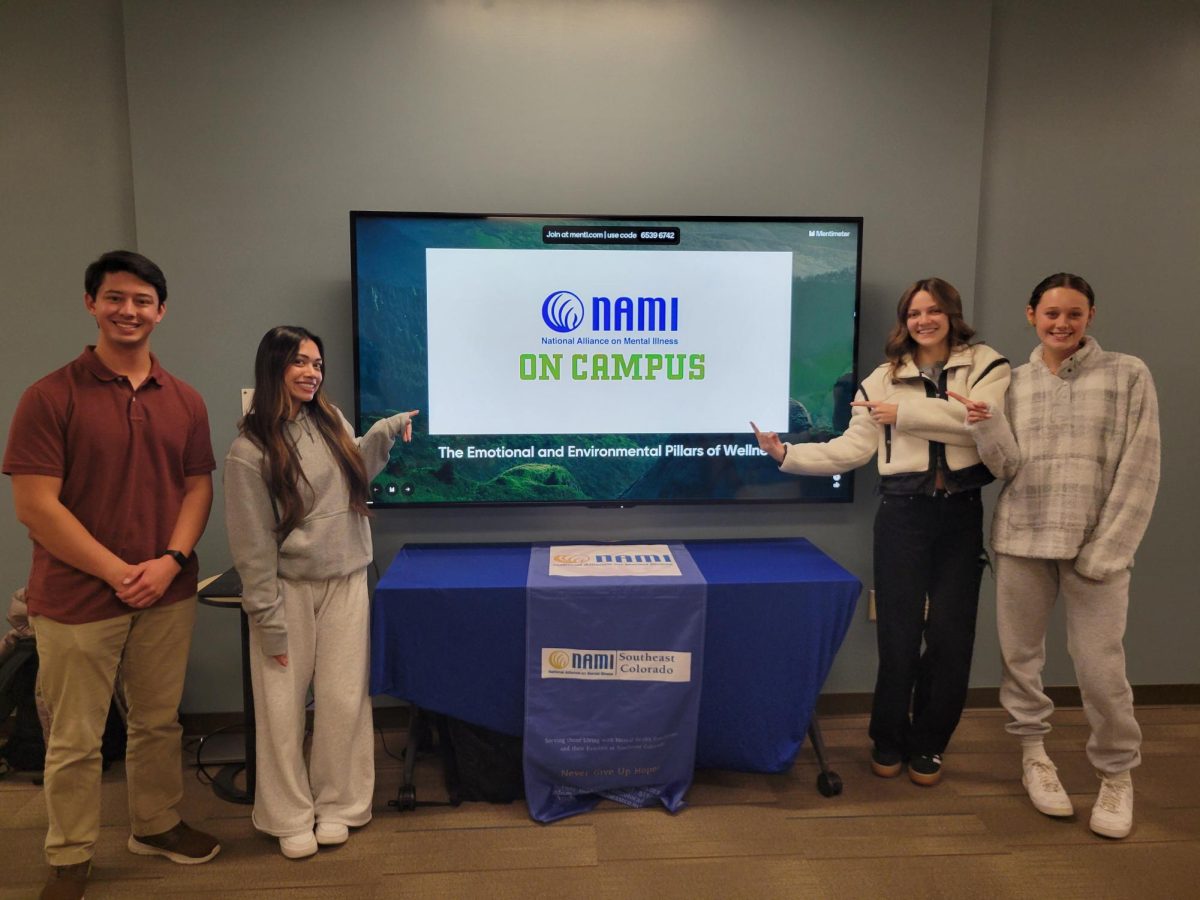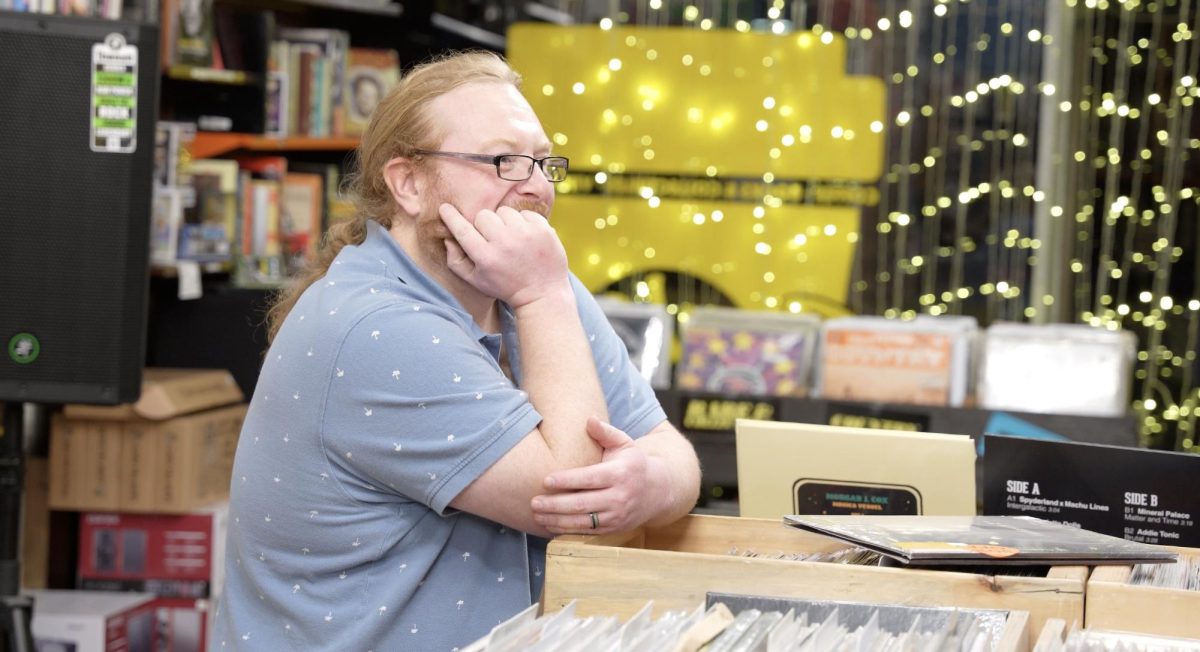 A full-time undergraduate, enrolled in 12 credit hours at CSU-Pueblo, pays approximately $800 in student fees each semester. These mandatory fees are in addition to course-specific fees, which can bring the total amount due in fees each semester to more than $1000.
A full-time undergraduate, enrolled in 12 credit hours at CSU-Pueblo, pays approximately $800 in student fees each semester. These mandatory fees are in addition to course-specific fees, which can bring the total amount due in fees each semester to more than $1000.
Student fees fund a number of organizations, projects and improvements on campus, but many students don’t know what organizations or projects their money is supporting.
Associate Students’ Government President Timothy Zercher and Anthony Schivelbein, speaker pro-tempore of the ASG Senate, are both members of the Student Fee Governing Board, which is the overseeing organization that handles the allocation of all fees paid by students with the exception of those for specific courses.
Zercher and Schievelbein explained the process by which student fees are distributed and spent by the eight committees that make up the Student Fee Governing Board.
“The Student Fee Governing Board is the board of boards,” Zercher said. “All the student fees go through this board. As of this year, the Student Fee Governing Board will not approve course or program fees; rather, those fees will be directly approved by the Senators representing the school that the course or program fee would affect.”
“Within the student fees, there are different committees that go from there, and within those committees, there are sub-committees which govern different pools of money that can only be spent on certain things and allocated in certain ways,” Schievelbein added.
“Within each committee, there are representatives from both the faculty and the ASG, as well as any other students who would like to sit on (that committee), and those members are the ones who dictate how the money is spent,” he said. “Then those proposals are sent to administration to approve, and then the money can finally be spent.”
There are eight different fees that a student is required to pay, along with tuition, each semester. One is the facility fee.
Zercher explained that the facility fee covers maintenance projects, upkeep of the fountain and the wolf sculptures, the spirit rock and other special structures on campus.
There are several improvement projects being considered for facility fee funding this year, including a clock tower, which would be a defining characteristic and a central meeting place on campus. All are still in the discussion phase, and students will be involved in any decisions made.
Another fee, which seems to be controversial for students, is the child care fee.
“A lot of people think (child care) is just completely paid for by student fees, but it actually isn’t,” Zercher said. “We have it listed as the ‘child care discount program’ and all of the students fund this discount through fees.”
Zercher said the child care center is not owned by the university, and the child care fee is a supplement that helps students who qualify to use the center at a discounted rate.
The student health fee goes to the clinic and helps fund the basic health care, immunizations and mental health counseling that anyone enrolled at CSU-Pueblo can take advantage of for little or no cost. Since the health center functions much like a physician’s office, the student health fee allows the clinic to keep costs for services at a minimum.
The athletics fee helps pay for uniforms for various university teams, upkeep of the fields and equipment, and the startup costs for club teams that play within the scope of the university’s athletic department.
“This fee goes to the different sports and is allocated by the determined importance of the sport to the school and how much money that sport makes back,” Schievelbein said. “So football gets a large chunk of that because the school makes so much money through it. Sports that don’t have very many spectators will still get a portion of the money, but not nearly as much because it’s not an investment return.”
“The student recreation center fee pays for the student rec center,” said Zercher. “Some money comes from community members because they pay to use the facilities, as do faculty and staff, but the rest comes from student fees.”
The recreation center uses its fee allocation to keep the gym open longer hours, which allows those who use it to be more flexible. It also makes it possible to offer more classes and equipment rentals, and employ more student workers.
The student affairs fee funds student life and ASG activities, leadership retreats, festivals and a variety of other happenings on campus. The Howl, the newsletter for the Office of Student Affairs, is also funded by this fee and uses the phrase “your student fees at work” to describe events sponsored by the department.
The student affairs fee also pays the stipends that ASG members are given each month for their hours of service to the university.
The Occhiato University Center is funded by the student center fee along with a portion of the facility fee. This money pays for the upkeep and maintenance of the OUC, and according to Zercher, a percentage of the fee has been set aside to help cover the costs of the renovation, which is scheduled to begin next year.
The bonds for the original OUC were just paid in full, while the bonds for the renovation are just beginning, and fees have helped to pay them all.
“Universities, like corporations, they live forever,” Zercher said regarding the timing of the renovations. “It’s actually pretty common, when one 20 year bond is done, it’s time to build a new (facility), or maybe before because technology will start advancing even faster, so maybe we’ll need a new one in five years.”
Zercher said that many students whose fees are being collected to fund the OUC renovation will have graduated and moved on before the work is done.
“I will never be in the new ASG offices,” he said. “If I stayed here and got a doctorate, I wouldn’t see the new offices. But the current OUC was paid for by past students. I think, personally, that them paying for my ability to use the Student Center and my current class paying for future generations being able to use a new Student Center is one of the most inspirational things about being part of a university. The fact that the fees I pay today will continue to be utilized for generations to come is very inspirational to me.”
The last fee, and one of the most important, is the technology fee. This fee has many facets including the funding of the central core infrastructure, upgrading of computer labs on campus, replacement of equipment and the funding of two information technology staff members and a work study position.
The rest is allocated to different departments for equipment and upgrades. Students or staff from any department on campus can place a request for funding, but it must be sponsored by the department or a faculty member. The Technology Fee Committee approves the requests and allocates the funds.
Some recent projects that tech fees were apportioned to include the coming upgrades in the Hasan School of Business and new recorders and iPads for the mass communications department.
Both Zercher and Schievelbein realize that the process by which student fees are allocated is a complicated one.
“The Student Fee Governing Board manages all student fees that any student would ever pay. They have to approve it,” Zercher said.
According to Schievelbein, one of the most important things to remember is that student fees at CSU-Pueblo are approved by students, and they are always used to benefit students.








Timothy Zercher • Oct 2, 2014 at 4:53 pm
If anyone is interested to learn more about student fees, please feel free to contact YOUR ASG!